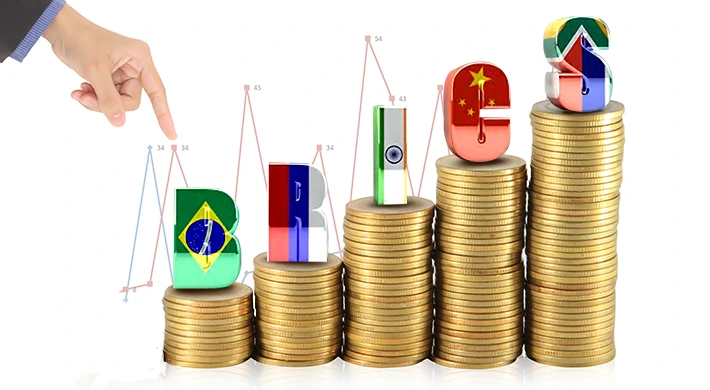BRICS:
A Forex Frontier Awaits – Demystifying the Trade Bloc’s Impact
The preceding analysis provided a comprehensive overview of the BRICS bloc’s economic prowess and its potential to redefine global trade dynamics. We now delve deeper into the practical implications this seismic shift holds for forex traders.
New BRICS impact on forex traders:
The New BRICS impact on the foreign exchange market is a complex interplay of macroeconomic fundamentals, geopolitical events, and investor sentiment. As these emerging economies gain prominence, their currencies are bound to experience increased volatility and attract greater attention from market participants.
Understanding the intricate correlations between these currencies and how they respond to domestic and global factors will be paramount for navigating the New BRICS landscape successfully.
A New Trading Canvas:
The BRICS’ rise disrupts the traditional forex landscape dominated by the US dollar and the euro. Their individual currencies, like the Brazilian Real (BRL) or the Chinese Yuan (CNY), offer new trading pairs and strategies:
- Carry Trade Opportunities: Emerging markets like Brazil often boast higher interest rates, inviting carry trade strategies. Traders borrow in low-interest currencies like the USD and invest in BRL, profiting from the interest rate differential.
- Commodity-Linked Volatility: BRICS economies rely heavily on commodities. Traders can leverage currency pairs like USD/RUB (Russian Ruble) to capitalize on fluctuations in oil prices or USD/ZAR (South African Rand) for gold price swings.
- Intra-BRICS Trade: As intra-BRICS trade increases, cross-currency pairs like CNY/BRL or INR/RUB gain prominence. Traders familiar with these correlations can exploit arbitrage opportunities and short-term price discrepancies.
Navigating the Currents: Expert Insights:
Prominent investors offer valuable perspectives on navigating this evolving landscape:
George Soros, legendary hedge fund manager, advises: “The key to profiting from the BRICS lies in understanding their unique political and economic dynamics. Don’t simply chase trends; delve deeper into individual country drivers and build your strategies accordingly.”
Stanley Druckenmiller, renowned investor, emphasizes: “Volatility is the name of the game with the BRICS. Be prepared for sudden shifts and hedge your positions carefully. Technical analysis alone won’t suffice; fundamental research is paramount.”

Promising Points: A Glimpse into the Future:
The BRICS’ story is still unfolding, but several intriguing possibilities beckon:
- Reserve Currency Aspirations: The NDB’s potential evolution into a reserve currency could lead to wider adoption of BRICS currencies, further disrupting the traditional hierarchy and creating new trading avenues.
- Infrastructure Development Boom: BRICS’ focus on infrastructure development presents opportunities for currency plays tied to construction materials, engineering firms, and related industries.
- Technological Innovation: The BRICS’ growing technological prowess, particularly in areas like AI and renewable energy, opens doors for currency plays linked to these sectors.
The Takeaway: A Call to Action:
The BRICS are not just another asset class; they’re a paradigm shift in the global forex landscape. Traders who can adapt, embrace volatility, and delve deeper into the intricacies of these emerging economies stand to reap significant rewards. The time to sharpen your analytical tools and dive into the BRICS frontier is now.

This article provides a framework, but you can further enrich it BRICS economic data :
- Gross Domestic Product (GDP): Measures the overall size and growth of the economy. Strong GDP figures can boost a currency, while weak ones can lead to depreciation.
- Inflation: Monitors the rate of price increase in goods and services. Higher-than-expected inflation can trigger central bank interest rate hikes, strengthening the currency. Conversely, lower inflation may prompt easing, weakening the currency.
- Trade Balance: Tracks the difference between a country’s exports and imports. A widening trade surplus can strengthen the currency, while a widening deficit can weaken it.
- Central Bank Interest Rates: Directly influence borrowing costs and currency attractiveness. Higher rates attract investment, potentially strengthening the currency. Lower rates make borrowing cheaper, potentially weakening the currency.
- Manufacturing and Purchasing Manager’s Indices (PMIs): Gauge the health of the manufacturing sector. Strong PMI readings indicate expansion, potentially favoring the currency, while weak readings suggest contraction, potentially weakening it.
In the next article, we will examine these factors more
Happy trading
may the pips be ever in your favor!









